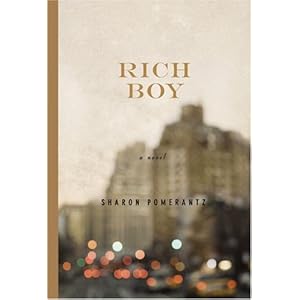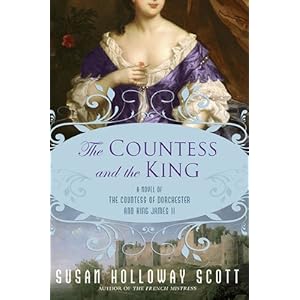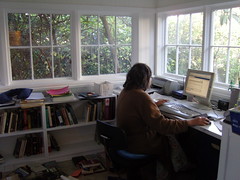
As a writer, I've had my share of rejections, but like most of us, I keep pitching.
So here I am on a Friday night, waiting for my muse and surfing the net, procrastinating about writing those "next five pages", when I came across this list of rejection letters sent to some now very famous writers.
I take solace in these biting, and sometimes hilariously off-base critiques of pre-published classics. I'm glad these authors never gave up. I have enjoyed so many of their stories. To writers everywhere, take heart, I've posted some of monumentally incorrect rejections ever made public:
Madeleine L'Engle's A WRINKLE IN TIME was turned down 29 times.
And THE TALE OF PETER RABBIT was turned down so many times, Beatrix Potter initially self-published it. (She was soooo ahead of her time!)
"I'm sorry, Mr. Kipling, but you just don't know how to use the English language." Editor of the San Francisco Examiner to Rudyard Kipling.
Mystery writer Mary Higgins Clark recently received a $60 plus million dollar advance on her next five books, but this is what happened when she was sending out her manuscript "Journey Back to Love" in the early 1960s: "We found the heroine as boring as her husband did."
Classic writer Colette was told in a letter of rejection: "I wouldn't be able to sell 10 copies."
A rejection letter to Pierre Boulle about his "Bridge Over River Kwai" said, "A very bad book."
Jean Auel, author of "The Clan of Cave Bear" was told, "We are very impressed with the depth and scope of your research and the quality of your prose. Nevertheless ... we don't think we could distribute enough copies to satisfy you or ourselves."
"Jonathan Livingston Seagull will never make it as a paperback." From the publisher of a magazine refusing an offer to bid on the paperback rights to Richard Bach's best selling novel. Avon Books eventually bought those rights and sales totaled more than 7.25 million copies.
H.G. Wells had to endure the indignity of a rejection when he submitted his manuscript, "The War of the Worlds" that said, "An endless nightmare. I do not believe it would "take"...I think the verdict would be 'Oh don't read that horrid book'."
And when he tried to market "The Time Machine," it was said, "It is not interesting enough for the general reader and not thorough enough for the scientific reader."
Jacqueline Susann's "Valley of the Dolls" received this response, "...she is a painfully dull, inept, clumsy, undisciplined, rambling and thoroughly amateurish writer whose every sentence, paragraph and scene cries for the hand of a pro. She wastes endless pages on utter trivia, writes wide-eyed romantic scenes ...hauls out every terrible show biz cliché in all the books, lets every good scene fall apart in endless talk and allows her book to ramble aimlessly ..."
When Irving Stone sent his manuscript, "Lust for Life," this is what came back in the mail: "A long, dull novel about an artist." I guess that meant "No thanks."
Before Ayn Rand became known as an intellectual and her books as classics, she had to get past this from one publisher: "It is badly written and the hero is unsympathetic." And this from another: "I wish there were an audience for a book of this kind. But there isn't. It won't sell." So much for "The Fountainhead." Fourteen years later she was sending "Atlas Shrugged" on its publishing rounds and reading in the return mail: "... the book is much too long. There are too many long speeches... I regret to say that the book is unsaleable and unpublishable."
To writer Samuel Johnson (though I don't know which book the editor was referring to): "Your manuscript is both good and original; but the part that is good is not original, and the part that is original is not good."
Regarding "The Spy Who Came in From the Cold" it was written "(this book has) no future ..."
Did you know that only seven of Emily Dickinson's poems were ever published during her lifetime? A rejection early in her career said, "(Your poems) are quite as remarkable for defects as for beauties and are generally devoid of true poetical qualities."
Edgar Allen Poe was told, "Readers in this country have a decided and strong preference for works in which a single and connected story occupies the entire volume."
Herman Melville, who had written a manuscript entitled "Moby Dick," was told, "We regret to say that our united opinion is entirely against the book as we do not think it would be at all suitable for the Juvenile Market in (England). It is very long, rather old-fashioned..."
Jack London heard, "(Your book is) forbidding and depressing."
Ernest Hemingway, regarding his novel, "The Torrents of Spring" was rejected with, "It would be extremely rotten taste, to say nothing of being horribly cruel, should we want to publish it." Ouch!
William Faulkner may be a classic writer to this, as well as prior, generation, but back when he was trying to crack the publishing market, he had to read letters like this one, "If the book had a plot and structure, we might suggest shortening and revisions, but it is so diffuse that I don't think this would be of any use. My chief objection is that you don't have any story to tell." This was kinder than the rejection he would receive just two years later, "Good God, I can't publish this!"
According to the terrific little book, "Rotten Rejections" (Pushcart Press, Andre Bernarnd, 1990), "Auntie Mame" went through fifteen rejections over a period of five years before finding a home at Vanguard Press.
Crash by J G Ballard
‘The author of this book is beyond psychiatric help.'
The Deer Park by Norman Mailer
'This will set publishing back 25 years.'
Gentlemen Prefer Blondes by Anita Loos
'Do you realize, young woman, that you're the first American writer ever to poke fun at sex.'
Lust for Life by Irving Stone
(which was rejected 16 times, but found a publisher and went on to sell about 25 million copies)
‘ A long, dull novel about an artist.’
Barchester Towers by Anthony Trollope
'The grand defect of the work, I think, as a work of art is the low-mindedness and vulgarity of the chief actors. There is hardly a lady" or "gentleman" amongst them.'
Carrie by Stephen King
'We are not interested in science fiction which deals with negative utopias. They do not sell.'
Catch – 22 by Joseph Heller
‘I haven’t really the foggiest idea about what the man is trying to say… Apparently the author intends it to be funny – possibly even satire – but it is really not funny on any intellectual level … From your long publishing experience you will know that it is less disastrous to turn down a work of genius than to turn down talented mediocrities.’
The Spy who Came in from the Cold by John le Carré
‘You’re welcome to le Carré – he hasn’t got any future.’
Animal Farm by George Orwell
‘It is impossible to sell animal stories in the USA’
Lady Windermere’s Fan by Oscar Wilde
‘My dear sir,
I have read your manuscript. Oh, my dear sir.’
Lolita by Vladimir Nabokov
‘... overwhelmingly nauseating, even to an enlightened Freudian … the whole thing is an unsure cross between hideous reality and improbable fantasy. It often becomes a wild neurotic daydream … I recommend that it be buried under a stone for a thousand years.
The list makes me smile.I found it at http://susiesmith13.tripod.com/id12.html.
I know the list is far from complete, but I had to post. Do you have more to add? Anyone have quotes from rejection letters sent to other great writers? Jane Austen maybe? Others?
 Not so very long ago, an interviewer asked me what I would change if I could go back and do my first book all over again. I laughed, not because it was a silly question, but because, bizarrely, I found myself in the position of doing just that. My publisher was reissuing my first book in mass market paperback and they had just offered me the opportunity to make any changes I felt necessary.
Not so very long ago, an interviewer asked me what I would change if I could go back and do my first book all over again. I laughed, not because it was a silly question, but because, bizarrely, I found myself in the position of doing just that. My publisher was reissuing my first book in mass market paperback and they had just offered me the opportunity to make any changes I felt necessary. finished it in 2003, and saw its release as a hardcover in 2005 as an elderly and jaded law school 2L. It’s 2010 now. There’s been a lot of water under the bridge.
finished it in 2003, and saw its release as a hardcover in 2005 as an elderly and jaded law school 2L. It’s 2010 now. There’s been a lot of water under the bridge.  Sure, I knew that in spring of 1803, Keats was only seven years old, but, hey, people knew this was all tongue in cheek, right? It was a nudge nudge wink wink between me and the reader. Besides, who would care?
Sure, I knew that in spring of 1803, Keats was only seven years old, but, hey, people knew this was all tongue in cheek, right? It was a nudge nudge wink wink between me and the reader. Besides, who would care?
















.jpg)







